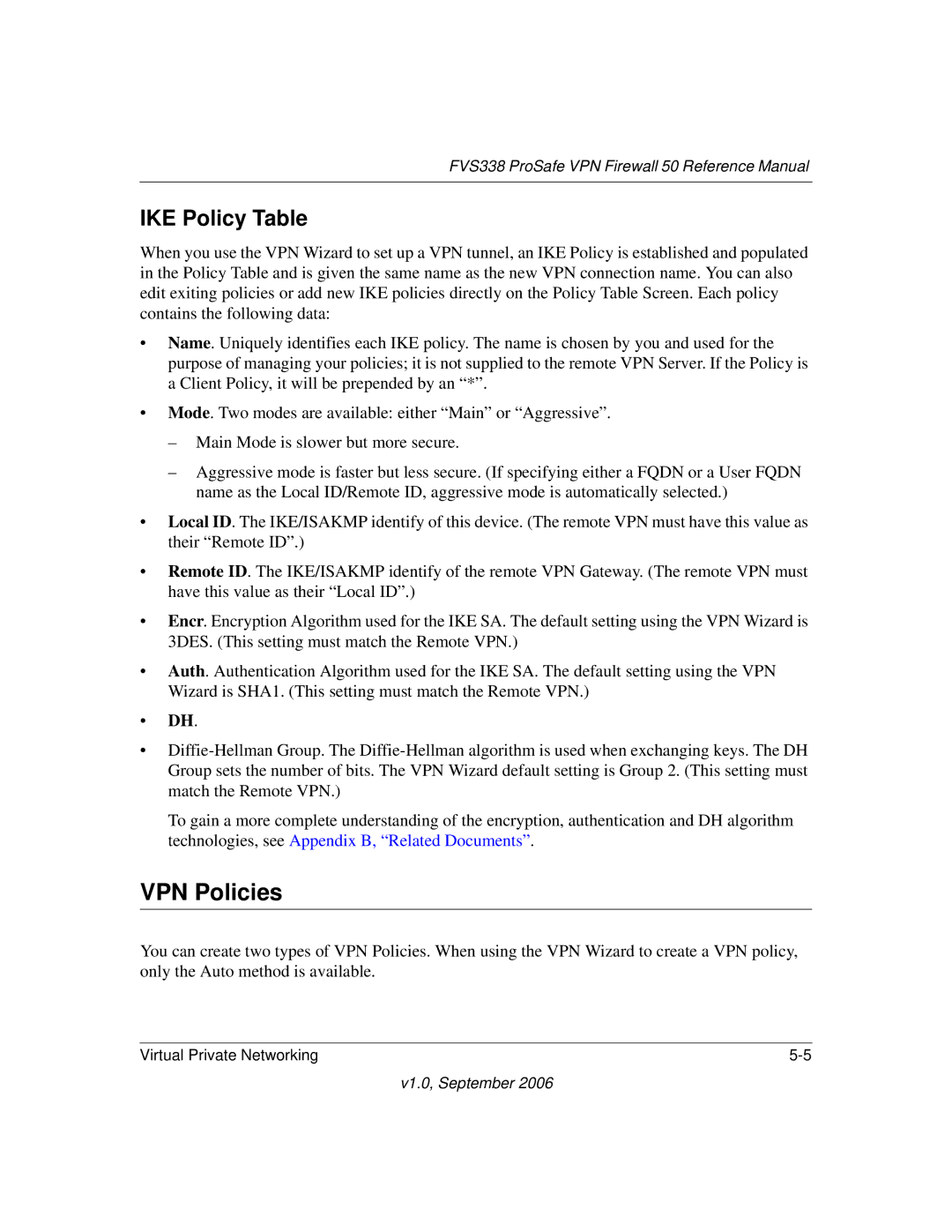
FVS338 ProSafe VPN Firewall 50 Reference Manual
IKE Policy Table
When you use the VPN Wizard to set up a VPN tunnel, an IKE Policy is established and populated in the Policy Table and is given the same name as the new VPN connection name. You can also edit exiting policies or add new IKE policies directly on the Policy Table Screen. Each policy contains the following data:
•Name. Uniquely identifies each IKE policy. The name is chosen by you and used for the purpose of managing your policies; it is not supplied to the remote VPN Server. If the Policy is a Client Policy, it will be prepended by an “*”.
•Mode. Two modes are available: either “Main” or “Aggressive”.
–Main Mode is slower but more secure.
–Aggressive mode is faster but less secure. (If specifying either a FQDN or a User FQDN name as the Local ID/Remote ID, aggressive mode is automatically selected.)
•Local ID. The IKE/ISAKMP identify of this device. (The remote VPN must have this value as their “Remote ID”.)
•Remote ID. The IKE/ISAKMP identify of the remote VPN Gateway. (The remote VPN must have this value as their “Local ID”.)
•Encr. Encryption Algorithm used for the IKE SA. The default setting using the VPN Wizard is 3DES. (This setting must match the Remote VPN.)
•Auth. Authentication Algorithm used for the IKE SA. The default setting using the VPN Wizard is SHA1. (This setting must match the Remote VPN.)
•DH.
•
To gain a more complete understanding of the encryption, authentication and DH algorithm technologies, see Appendix B, “Related Documents”.
VPN Policies
You can create two types of VPN Policies. When using the VPN Wizard to create a VPN policy, only the Auto method is available.
Virtual Private Networking |
